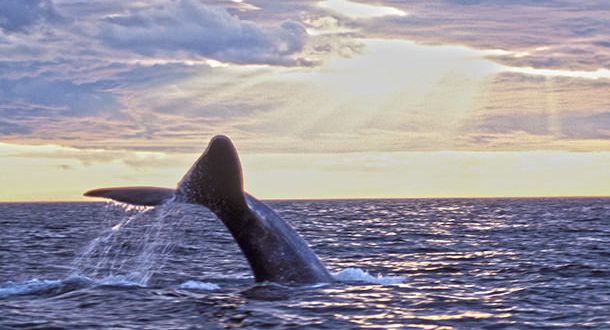Researchers from the United States and Canada will take part in an unprecedented survey of marine mammals off Atlantic Canada this year.
Researchers who want to help track whale movements can do so with the Whale Alert App, which can be used on any mobile device.
Whale Alert helps reduce the chance of fatal ship strikes by large vessels by displaying active whale management areas, required reporting areas, recommended routes, areas-to-be-avoided and near real-time warnings in shipping lanes along both coasts of the United States and Canada.
This information allows vessel operators to avoid collision with whales by slowing down and heightening their visual awareness.
Whale Alert now supports reporting of whale sightings by the maritime community and the broader public. This information is shared in real-time with leading whale researchers and state and federal management authorities. In some cases, whale sightings will trigger confirmation “over-flights” by the National Marine Fisheries Service (NMFS) or the United States Coast Guard (USCG) who will then determine whether or not temporary speed restrictions should be created (Dynamic Management Areas).
Sean Brillant, senior conservation officer with the Canadian Wildlife Federation, said sightings are crucial because the summertime whereabouts of the 500 remaining North Atlantic right whales has become a mystery.
“The more eyes that are on the ocean, whether they are trained scientists or people in pleasure craft, a sighting of a right whale could be a really valuable find,” Brillant said Tuesday in an interview from Halifax.
For more than 30 years, the whales have migrated to areas in the Bay of Fundy and off the southwestern tip of Nova Scotia — the Grand Manan Basin and Roseway Basin. However, that route has changed.
“It could be part of a regular cycle,” Brillant said, adding that scientists have collected only 30 years of data about animals that can live up to 70 years.
“It shows us how little we know about what these whales are doing … We don’t even know where they’re going. It’s been a real shock to the system for a lot of people.”
Cathy Merriman, a species at risk biologist with the Federal Fisheries Department, said zooplankton data collected for years by federal scientists in Quebec will be used to test that theory.
The search for the whales has encouraged Canadian and American researchers and scientists from different disciplines to join forces and share their findings, she said.
“Two years ago, we realized there’s all of this stuff going on, so let’s get everybody together at a meeting or on the phone,” she said.
The result has been an unprecedented level of co-operation, said Brillant.
“It’s like what happens when somebody loses a dog, and everyone who is outside agrees to help find the dog. Except, these are 70-tonne dogs.”
There will be surveys from the air and water. And a group of autonomous, underwater drones that look like chubby torpedoes will be dispatched to prowl the ocean, listening for whale song and transmitting a variety of data via satellite.
Finding and tracking beasts that can be as big as a city bus is difficult, said Brillant.
“It is a reflection of just how big the ocean is,” he said, adding the North Atlantic right whale typically spends 15 to 20 per cent of its time at the surface.
The whales bump into each other so often and with such force that tracking devices attached with suction cups rarely last more than a few weeks. And embedding beacons in their flesh can lead to nasty wounds.
The North Atlantic right whale is one of the most endangered whales in the world. Its name comes from the idea that it was the “right” whale to hunt: it was slow moving, floated after death and had enormous amounts of oil and baleen. Even though commercial whaling ended in 1935, fewer than 500 right whales are alive today.
Agencies/Canadajournal
 Canada Journal – News of the World Articles and videos to bring you the biggest Canadian news stories from across the country every day
Canada Journal – News of the World Articles and videos to bring you the biggest Canadian news stories from across the country every day



